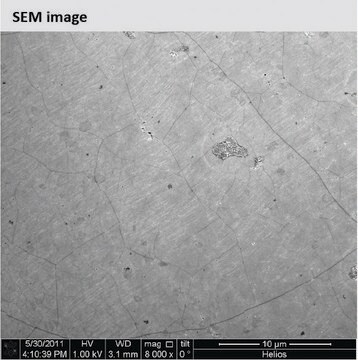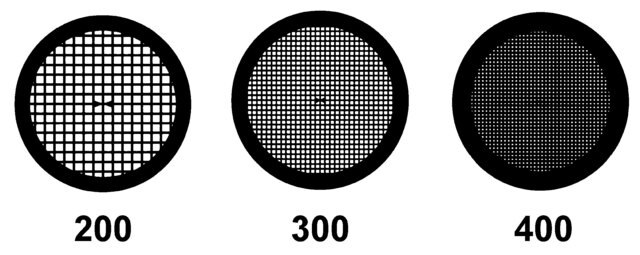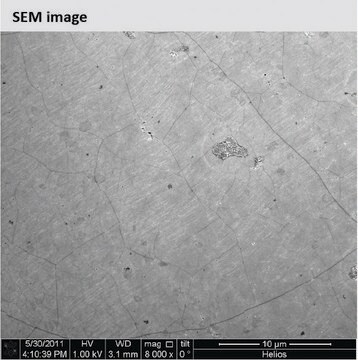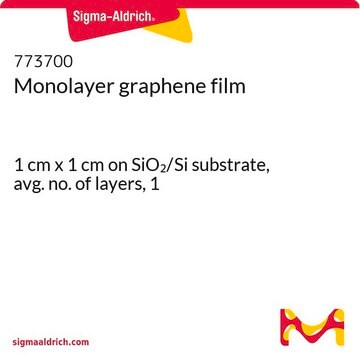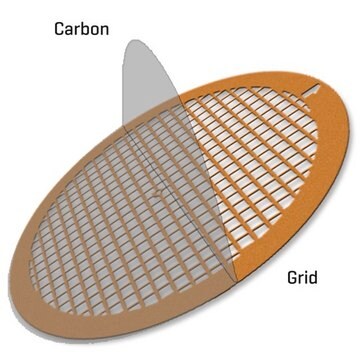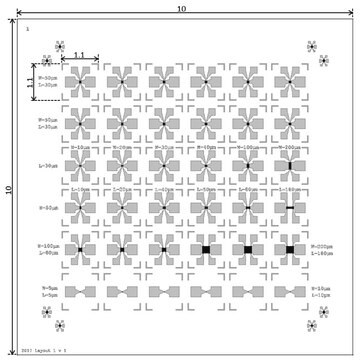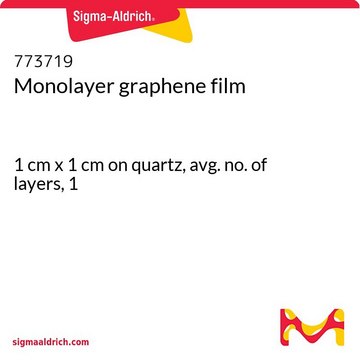798177
Graphene, monolayer film
on TEM grid substrate (Quantifoil gold)
About This Item
Produits recommandés
Nom du produit
Suspended monolayer graphene on TEM grid substrate (Quantifoil gold),
Forme
solid
Niveau de qualité
Résistance
170 Ω/sq
Diam. × épaisseur
2 mm × (theoretical) 0.345 nm , monolayer graphene film
Taille × distance entre les disques × diam.
2 μm × 4 μm × 3 mm, gold coated TEM grid
Catégories apparentées
Description générale
Graphene Film Properties
Growth Method: CVD synthesis
Transfer Method: Clean transfer method
Size: 2 mm (TEM grid diameter)
Appearance (Color): Transparent
Transparency: >97%
Coverage: >95%
Number of graphene layers: single layer
Thickness of the lazy carbon is about 12 nm.
FET Electron Mobility on Al2O3: 2; 000 cm2/Vs
FET Electron Mobility on SiO2/Si (expected): 4; 000 cm2/Vs
Sheet Resistance: 170 Ohms/sq.
Grain size: up to 10 micrometer
Substrate TEM grid
Type: QUANTIFOIL(registered) R 2/4
Hole Size: 2 micrometers(Au grid is 300 mesh)
Space between holes: 4 micrometers
Diameter: 3 mm
Coating: Au coated
Application
Code de la classe de stockage
11 - Combustible Solids
Classe de danger pour l'eau (WGK)
WGK 3
Point d'éclair (°F)
Not applicable
Point d'éclair (°C)
Not applicable
Faites votre choix parmi les versions les plus récentes :
Déjà en possession de ce produit ?
Retrouvez la documentation relative aux produits que vous avez récemment achetés dans la Bibliothèque de documents.
Les clients ont également consulté
Articles
Graphene is a one-atomic-layer thick two-dimensional material made of carbon atoms arranged in a honeycomb structure. Its fascinating electrical, optical, and mechanical properties ignited enormous interdisciplinary interest from the physics, chemistry, and materials science fields.
Advanced technologies for energy conversion and storage are widely sought after for their potential to improve consumer and electronic device performance as well as for the prospect of reducing the societal and environmental impact of energy generation.
The production of hydrogen by catalytic water splitting is important for a wide range of industries including renewable energy petroleum refining and for the production of methanol and ammonia in the chemical industry.
Notre équipe de scientifiques dispose d'une expérience dans tous les secteurs de la recherche, notamment en sciences de la vie, science des matériaux, synthèse chimique, chromatographie, analyse et dans de nombreux autres domaines..
Contacter notre Service technique
